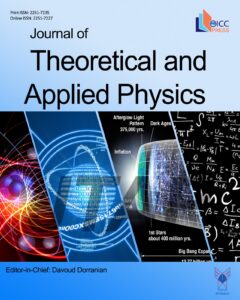The effect of powered needle-electrode geometry on the RF plasma jet
Authors
Abstract
An atmospheric pressure plasma microjet device with a tapered ground electrode and dielectric barrier is developed. The effects of the powered electrode geometry and input power on the specifications of the launched RF plasma jets are investigated. Needle-powered electrodes with different types, shapes, lengths, and diameters, such as perforated and un-perforated hollow cylindrical tubes with different inner and outer diameters or solid with flat tip and with sharp tip steel nail rods are examined. The effects of the discharge gap size on the launched jet lengths and widths are studied. The axial and radial components of the electric field are simulated at the device output nozzle by applying radiofrequency power to the needle electrode and their possible effects on the plasma plume generation are discussed. The variations of the launched microjet lengths and widths are investigated versus the working gas (argon) flow rates in two experiments with two different fixed input powers. It has been shown that there is an optimum flow rate to obtain maximum jet length with a suitable narrow width. The effects of nozzle diameter, how to inject gas into the system, and argon flow rates on the plasma plume characteristics are discussed through the Reynolds number.




